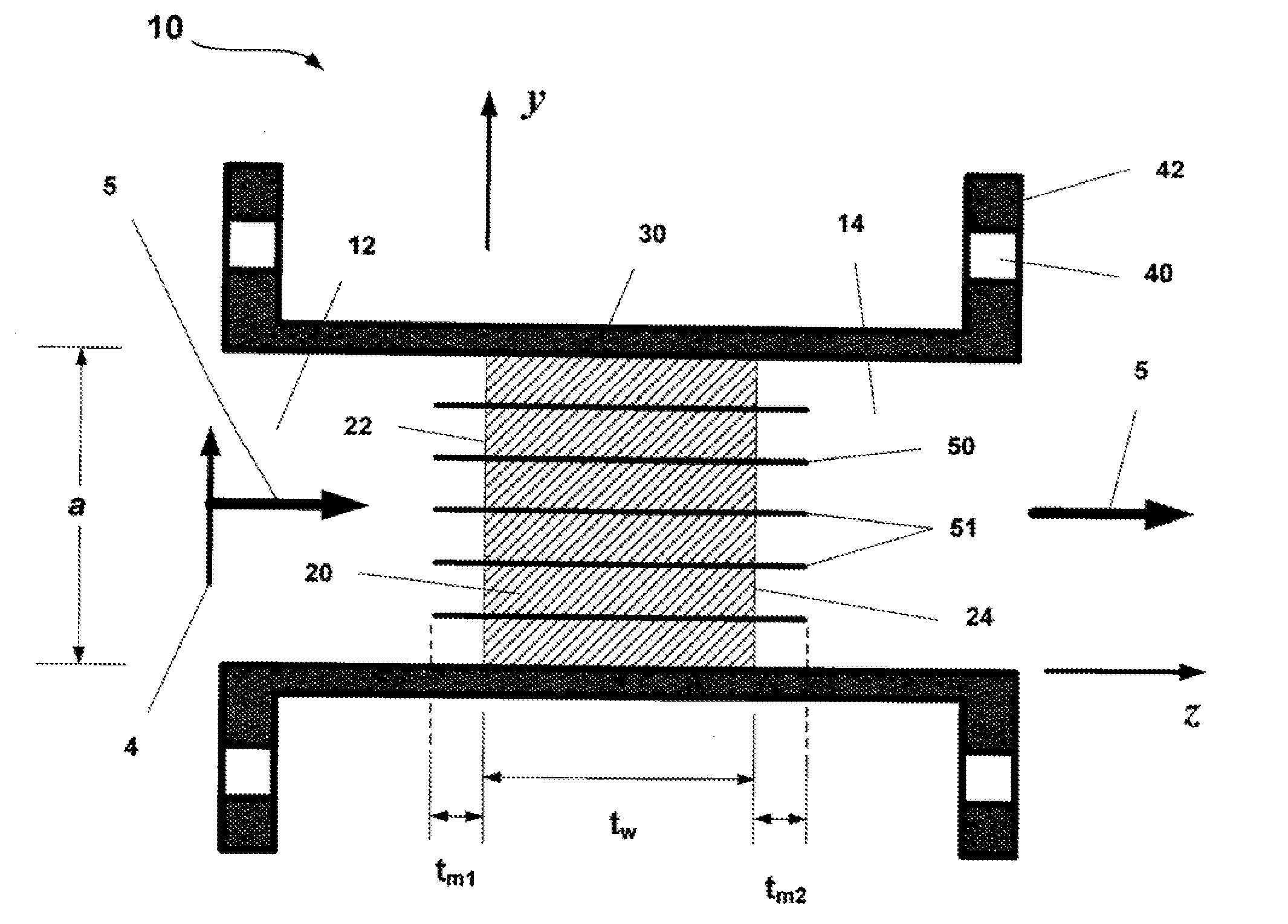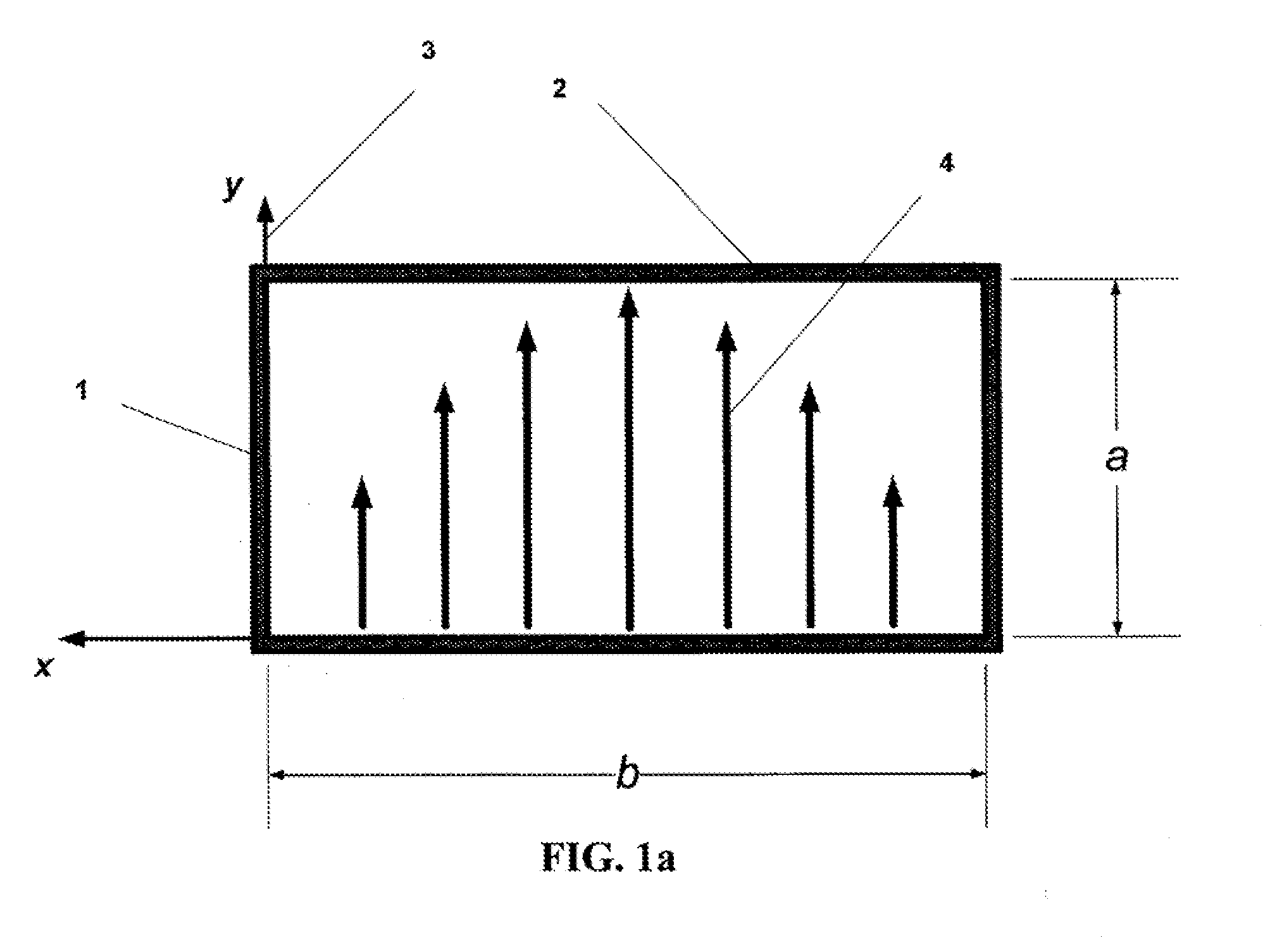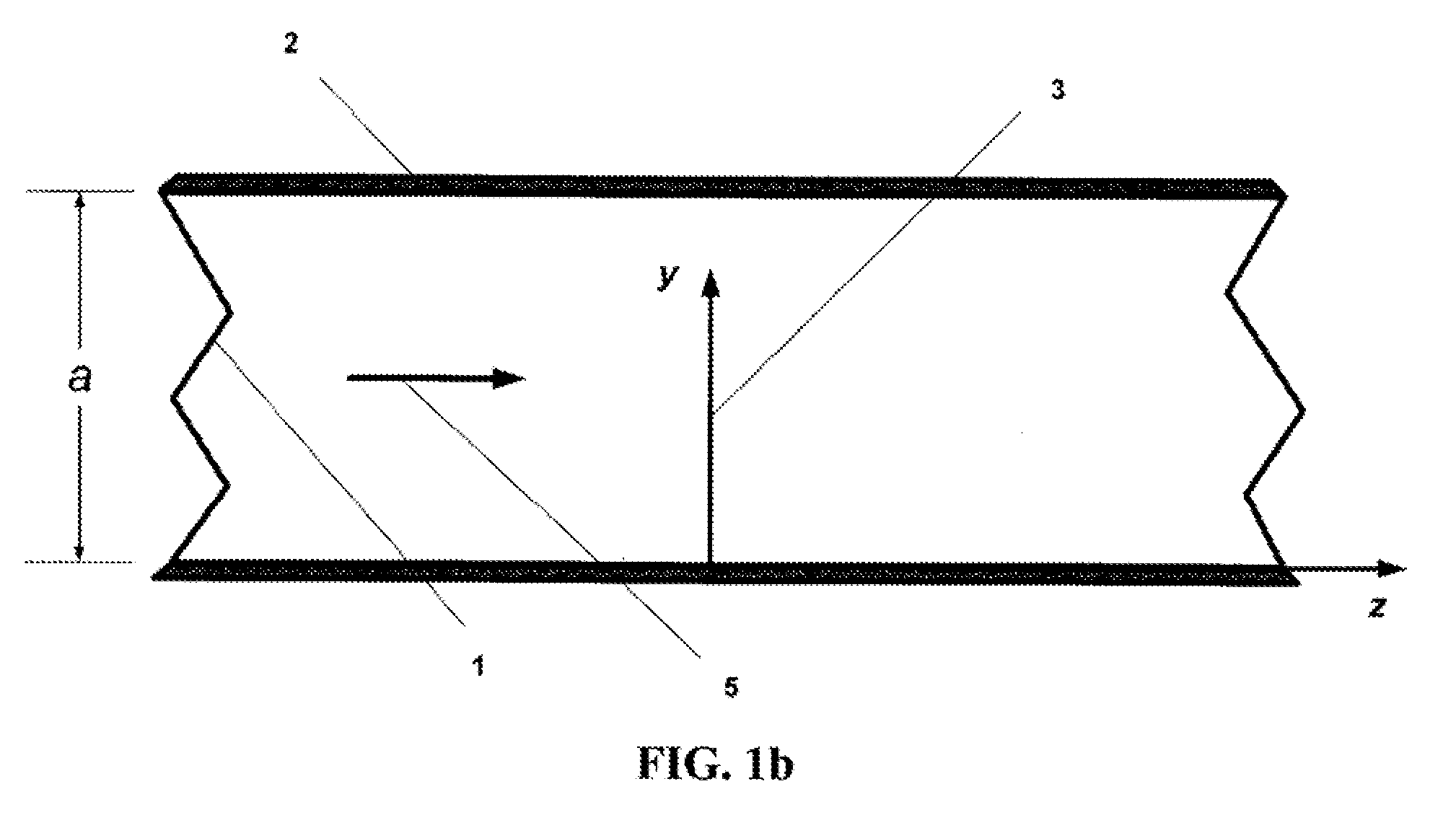High Peak and Average Power-Capable Microwave Window for Rectangular Waveguide
a rectangular waveguide and microwave window technology, applied in waveguide type devices, basic electric elements, electrical apparatuses, etc., can solve the problems of frequency dependence of the operation of the rectangular waveguide window, and none of the devices, however, disclose or teach the use of the rectangular waveguide microwave window for fundamental mode propagation, etc., to maximize the operating bandwidth optimize the transparency of the rectangular waveguide microwave window, and increase the average power capability of the waveguide window
- Summary
- Abstract
- Description
- Claims
- Application Information
AI Technical Summary
Benefits of technology
Problems solved by technology
Method used
Image
Examples
Embodiment Construction
[0038]The geometry of rectangular waveguide is shown in the principal plane cross sections in FIGS. 1a, 1b and 1c. The narrowwall 1 has dimension a, while the broadwall 2 has dimension b, b>a, and for standard rectangular waveguide b˜2a. All boundaries of the waveguide are metal and are good electrical conductors. For the claimed invention the rectangular waveguide can be standard (one in which the dimension of the broadwall is approximately twice the dimension of the narrowwall) or non-standard (one in which the dimension of the broadwall is more than twice the dimension of the narrowwall). A standard right-hand coordinate system 3 is assigned to the geometry and is also shown in the figures. As indicated in FIG. 1b, an electromagnetic wave is assumed propagating 5 along the z-axis direction. The mode of the propagating electromagnetic wave is assumed to be that of the TE10 rectangular waveguide mode 4, as shown in FIG. 1a, also known as fundamental mode of the rectangular waveguid...
PUM
 Login to View More
Login to View More Abstract
Description
Claims
Application Information
 Login to View More
Login to View More - R&D
- Intellectual Property
- Life Sciences
- Materials
- Tech Scout
- Unparalleled Data Quality
- Higher Quality Content
- 60% Fewer Hallucinations
Browse by: Latest US Patents, China's latest patents, Technical Efficacy Thesaurus, Application Domain, Technology Topic, Popular Technical Reports.
© 2025 PatSnap. All rights reserved.Legal|Privacy policy|Modern Slavery Act Transparency Statement|Sitemap|About US| Contact US: help@patsnap.com



